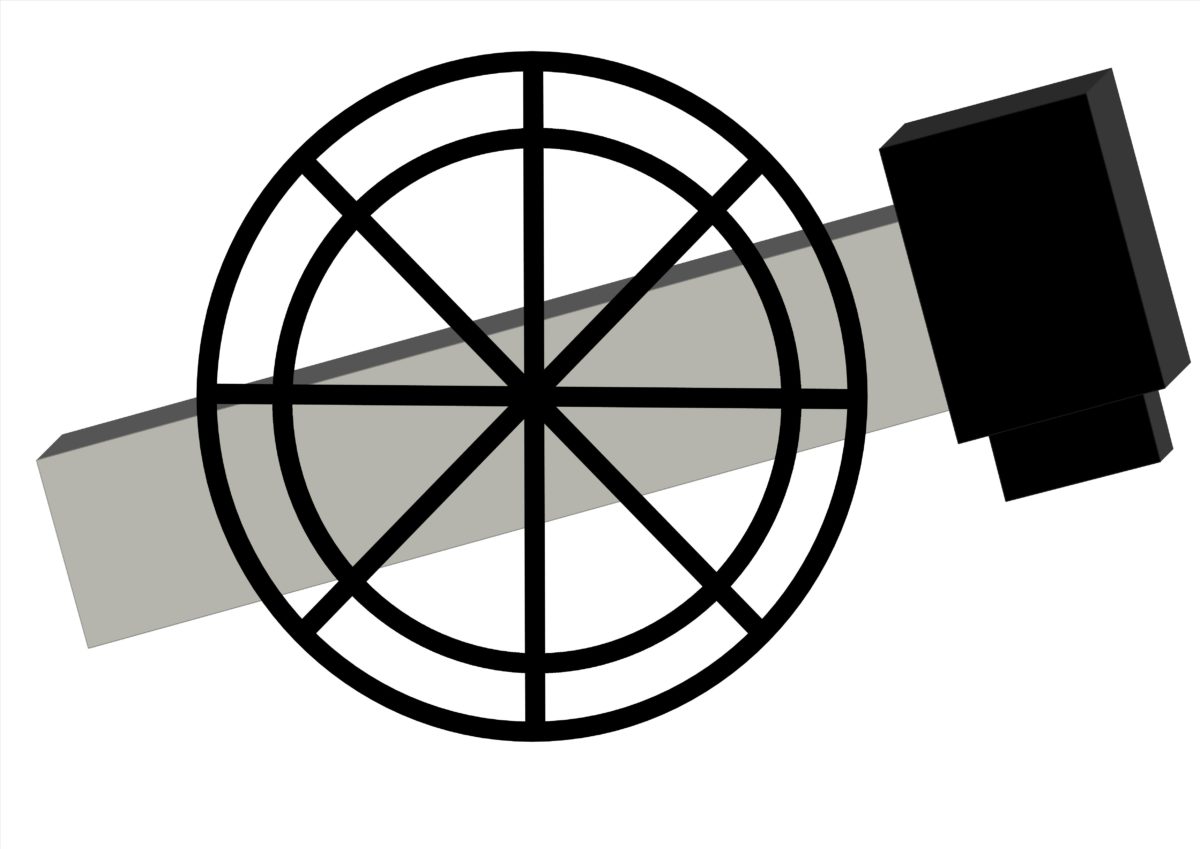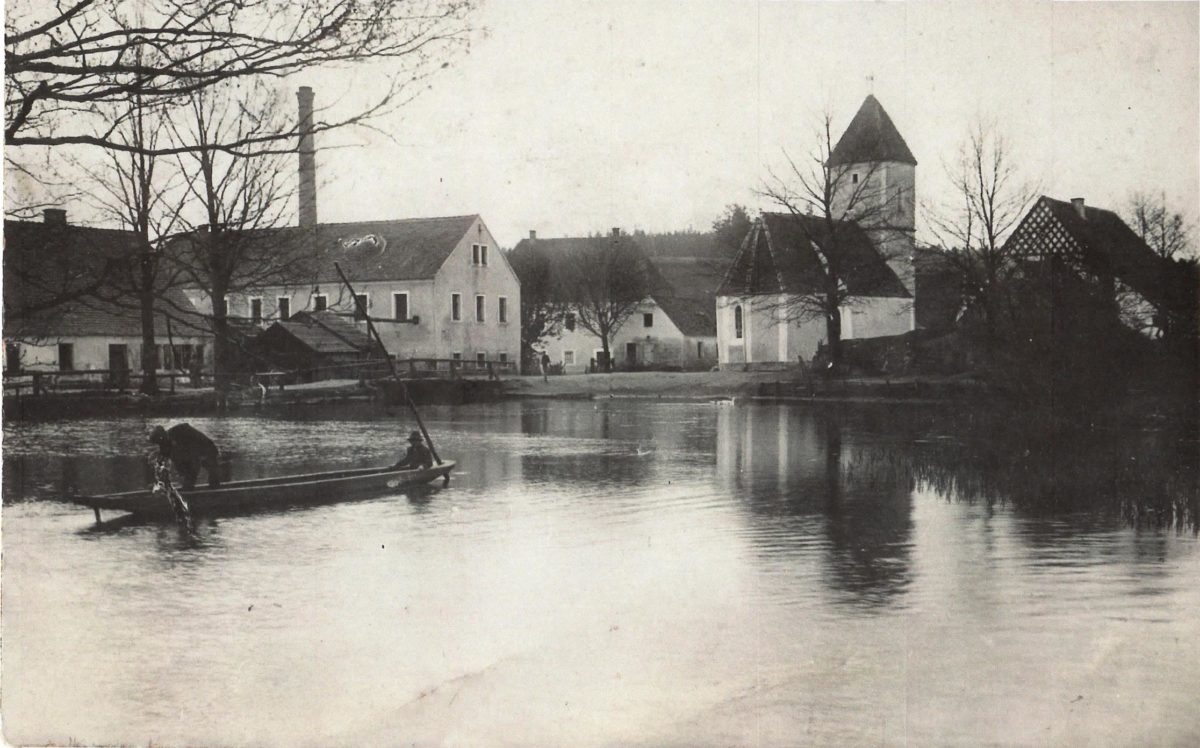Hütten
From wooden huts to its own community
The first documented mention of Hütten is found in a land register from 1270. Slag remains found during excavations have been scientifically dated to between 1280 and 1390 and testify to an early stage of development of iron smelting. Hütten has always belonged to the dominion of Parkstein Castle and became an independent municipality together with Grub and Steinfels in 1808.
In 1972, Hütten and Grub became part of Grafenwoehr during the territorial reform, Steinfels became part of Mantel.
The name ‚Hütten‘
To get from the south to Parkstein, the Haidenaab had to be crossed, which was easiest in Hütten. For the difficult transport of goods across the river, helpers settled there who built simple huts as shelters and from which the village mark „near the huts = Hütten“ later developed. Hütten was situated on important old roads, such as the iron road or the pig road. An indentation of the customs barrier can still be seen at the Laurentius Church. The traffic junction in the medieval iron industry was also a good location for a hammer mill. From 1389 the hammer lords Mendel von Steinfels were in Hütten.
Hammer castles: Turning old into new
The Hütten hammer, one of the oldest in our region, stood north of the Laurentius Church on the Haidenaab near the „Old Castle“. Because of the swampy terrain the castle was built on pile grates, surrounded by a moat, two-storied, made of stone and covered with tiles. A map from the 16th century shows a view of the old castle. In 1914, during the construction of a drainage ditch, parts of the wooden grate, weapons and tiles were found. After the construction of the new castle in 1606, the old moated castle was used as an estate inn, and in 1772 all the buildings on the pile island disappeared. Since 1472 until today exists the Laurentius church, built by Konrad Mendel von Steinfels. Old foundation walls show that there was a small chapel on this place as a predecessor building earlier. The „new“ castle, which still exists today, was built in 1606 opposite the Laurentius Church. It was originally one floor higher and had a round tower. The reconstruction to the present form took place in 1830 because of dilapidation. Besides the new hammer mill, a mill and a brewery belonged to the new manor. Furthermore, in the middle of the village between the paths to Steinfels and Kaltenbrunn, there was a „castle garden“ of 3,000 square meters with a ring of walls and all kinds of fruit, spices, hops and useful plants until 1920.
Longest iron industry in the region
Both the old and the new hammer mills were rail hammers. They produced valuable bar iron from the 13th century until they were closed down for lack of profitability in 1630. During the Thirty Years` war the hammer and the mill were destroyed. After that, from 1668 onwards, a linseed mill and a saw were operated, and about a hundred years later, additionally a glass loop. It was not until 1816/19 that iron processing was resumed in a hammer mill, which the owner Johann Nepomuk Hubmann had built without a permit. The heyday of the hammer, mill and glass loop did not last long, as the onset of industrialization squeezed out small private businesses. From 1825 to 1850, new sources of income were a lime kiln near the „Sandacker“ at the fork in the road to Pechhof and Parkstein, and a second one presumably in the Blumerau, above the Kaltenbrunn – Grafenwöhr road.
The Hütten blast furnace
In 1838, the Schlör family bought the Hütten hammer mill. When in 1856 a hurricane caused an oversupply of wood, Anton Schlör built a blast furnace (today the location of the fire station), which, however, came to a standstill again in 1875. More than 600 years of iron industry in Hütten thus came to an end. From 1875, water power was only used to drive the mill and the old glass loop and polishers. In 1882, the large glass loop and polishers were rebuilt on the old site. At the turn of the century there was also a paint mill in Hütten, later a stone factory, sand pits and the lithin works. In 1926, Schlör has the Haidenaab regulated because of the danger of flooding, and the water power in Hütten is extinguished. In 1970, Eduard Wittmann acquired the Hütten estate including the Laurentius Church. Today, the church is still owned by the family, and the owner of the hammercastle since 2005 is Elisabeth Winters.
 cycle trail ‚hammer mills & mills‘
cycle trail ‚hammer mills & mills‘